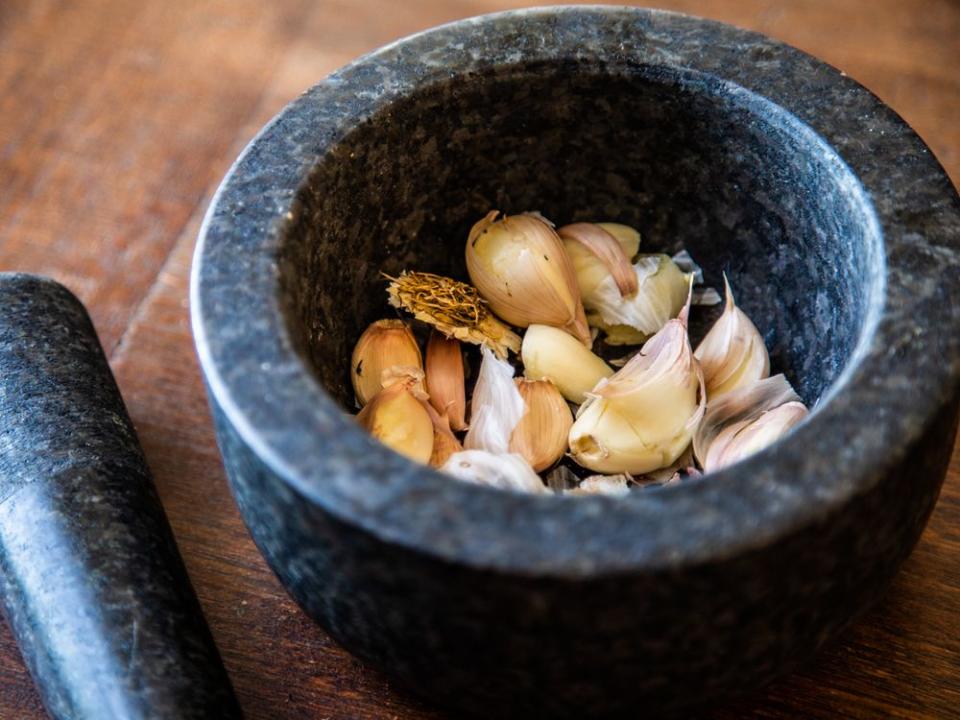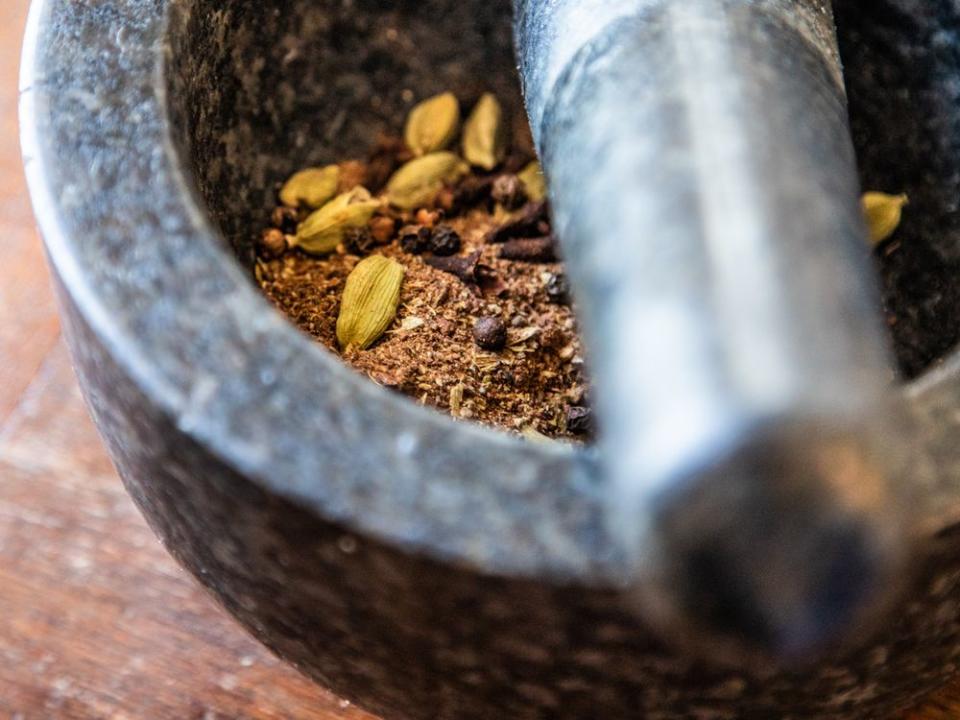Give One of the World's Oldest Cooking Tools the Respect It Deserves
Great hosts have great tricks. In Supper Club, Jonah Reider taps into the joys of do-it-yourself hospitality, sharing his tips to become a more creative, improvisational, and confident host.
It may be a new decade, but the best upgrade to your cooking routine was invented about 37,000 years ago. The mortar and pestle—an almost comically analog stone bowl and stick—is a timeless staple in every cuisine.
Chic, unbreakable, and relatively intuitive, a mortar and pestle deserves prime real estate on your kitchen counter. It's fun to use in front of guests, and makes a seamless transition from the kitchen to the table. Mine is always ready to easily crush potent whole spices, peel and mash garlic, and whip up flavorful pastes, spice blends, sauces, and dips.

Above all, using a mortar and pestle really taps into the primal joys of cooking: there’s something exhilarating, even cathartic, about furiously transforming food from one form to another with nothing but a small stone.
Go with unpolished granite
Forget about dainty porcelain mortars that can barely handle an avocado. The best mortars and pestles are large and made from coarse unpolished granite. This stone creates enough friction to easily and evenly break down any type of ingredient. It’s also nonporous, so it doesn’t retain flavor and is easy to clean by hand.
Buy the one I use: Kota Japan Large Black Granite Mortar & Pestle, for $29 on Amazon.
No matter what I’m making, I first use the pestle like a hammer to soften and break down ingredients into smaller pieces. Then, I grind away, pushing the pestle against the walls of the mortar. Ingredients are drawn between the stone and quickly pulverized. A very smooth paste or powder rarely takes more than one minute of grinding, but often I prefer a slightly rougher texture.
Maximize the flavor of spices

Powdery, pre-ground spices so easily turn dreary and bland. A mortar and pestle guarantees impressive meals by letting me work with whole spices instead.
Whole spices are inexpensive but potent: I keep all types in simple deli containers away from direct sunlight, taking out small quantities to grind as needed while cooking. It takes much less time than you’d think and dramatically elevates the simplest dishes. A small sprinkle of freshly ground black pepper, for example, adds a powerful warmth to complex sauces and seared meats just as much as it does to a fried egg or buttered toast.
To maximize their potency, I toast spices in a hot skillet for a few minutes before crushing them. A blend of freshly toasted and ground fennel seed, coriander, and cumin make a reliably magnificent seasoning for meats and vegetables. And if you like spicy, smoky chai, make your own using in the mortar and pestle using cardamom, cloves, cinnamon, and black pepper.
Never have garlic fingers again

Garlic's lovely stench is clingy; it never seems to leave my fingers or the cutting board. A mortar and pestle lets me comfortably and efficiently peel and mash it without pungent residue.
Bludgeoning a head of garlic with a pestle immediately breaks it into individual cloves, each with their skin slightly cracked. These bruised cloves cleanly separate from their skin with a light squeeze. Afterwards, the mortar quickly and cleanly mashes them into a paste perfect for all types of cooking. Doing so with a bit of salt further intensifies the garlicky flavor.
Make one-pot marinades, dips, and dressings

Salty garlic paste and freshly ground spices or herbs are the building blocks to almost all of the sauces, marinades, dressings, and dips that I regularly serve.
Once I’ve improvised an intense pulp in my mortar, I gently fold in something soft and creamy. Olive oil and citrus juice suffice for bright dressings and marinades. But adding avocado, soft roasted peppers, broiled cherry tomatoes, or thick yogurt will result in a complex no-recipe sauce or dip.
Mash everything up to the texture of your liking, season it with salt and acid to taste, and triumphantly bring the mortar to a table of salivating guests. Voilà: a surefire upgrade to your usual roast chicken, stew, or sautéed veggies—no wifi-connected, sentient blender necessary.
Dine with Jonah at his supper club Pith and follow along his culinary adventures on Instagram.

